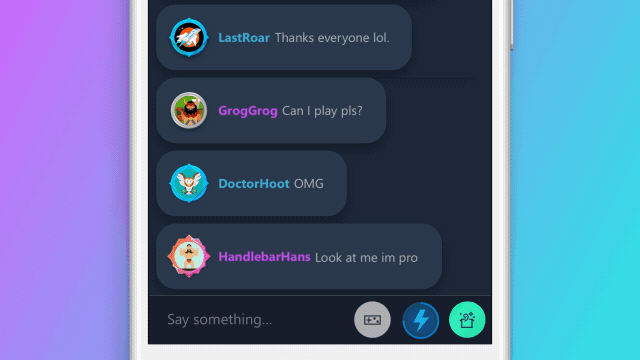On game streaming platforms today, there’s really only one way to earn status within a creator’s community: you have to become a subscriber. Microsoft’s game streaming service Mixer is today aiming to offering a third path to status through loyalty and participation. In doing so, it hopes to better differentiate itself from larger rivals like Twitch and YouTube.
Channel Progression, as this new feature is called, is a system that rewards community members and a streamer’s fans for more than just their financial contributions. It also takes into account other activity within the channel and on Mixer as a whole.
Members can level up by participating in the stream’s chat, by their repeat visits, by using Skills (aka other forms of expression like stickers, effects and GIFs that are used in chats), and more. That means that viewers will be able to earn rewards and raise their rank by just participating — watching, chatting, following, subscribing, and later, through other actions, as well.
As streamers participate, they’ll rank up, gaining them bragging rights and other perks that will vary by their rank level. They can also check on their rank at any time by clicking on the “Your Rank” button at the bottom left corner of the chat box.

The feature is rolling out on Wednesday May 1, 2019 to all streamers on Mixer — not just Mixer Partner, as it’s designed to not only be a way for streamers to grow their own communities, but for Mixer itself to grow.
In the future, however, Mixer Partners will be able to also reward monetization actions, like subscribing, gift subscriptions, and for spending Embers (virtual currency).
The changes come at a time when there’s been a rise in complaints over how hard it is to get noticed on the leading game streaming site, Twitch. Some smaller streamers told The Verge last summer they spent years broadcasting to no one, and found it difficult to grow their community, despite the effort Twitch has made in this area. More recently, that’s included the launch of a four-person Squad Stream, to help creators get discovered.
Despite this, Twitch’s longtail continues to grow — according to a recent report from StreamElements, the top 1,000 Twitch channels were responsible for 57% of Twitch’s viewership hours in Q1 2019, and the longtail (those beyond the top 10,000 channels) was responsible for 20%. In total, Twitch hit 2.7 billion hours of content watched in Q1, the report claimed.
Mixer, by comparison, is much smaller. Its numbers may have quadrupled since Q1 2019, but that’s only going from 22 million hours watched to 89 million. It still has much, much further to go to catch up with YouTube Live, not to mention Twitch.
Mixer’s channel progression feature was originally announced in November as part of Mixer’s “Season 2” release. It launches tomorrow to all on Mixer.com on the desktop and will roll out to all other platforms in the weeks ahead.
from TechCrunch https://tcrn.ch/2DHhI60
via IFTTT
Comments
Post a Comment